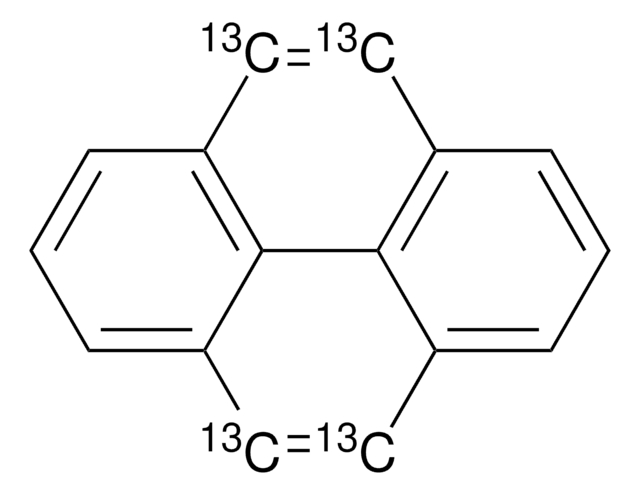900091
Iron oxide (II,III), nanoparticles
10 nm avg. part. size (TEM), streptavidin functionalized, 1 mg/mL in H2O
About This Item
Produtos recomendados
Formulário
dispersion
nanoparticles
Nível de qualidade
concentração
1 mg/mL in H2O
Tamanho médio da partícula
10 nm (TEM)
grupo funcional
streptavidin
temperatura de armazenamento
2-8°C
Procurando produtos similares? Visita Guia de comparação de produtos
Aplicação
Outras notas
Código de classe de armazenamento
10 - Combustible liquids
Classe de risco de água (WGK)
WGK 2
Ponto de fulgor (°F)
Not applicable
Ponto de fulgor (°C)
Not applicable
Escolha uma das versões mais recentes:
Já possui este produto?
Encontre a documentação dos produtos que você adquiriu recentemente na biblioteca de documentos.
Os clientes também visualizaram
Artigos
Professor Yu Cheng and co-workers look at the recent advances of nanoparticle-based imaging contrast agents for in vivo stem cell tracking. They provide an in-depth look at popular in vivo imaging techniques, magnetic resonance imaging, fluorescence imaging, ultrasound imaging, and photoacoustic imaging.
Professor Hui Mao explores the use of superparamagnetic iron oxide nanoparticles (INOPs) that offer an alternate contrast-enhancing mechanism.
Professor Yadong Yin (University of California Riverside, USA) examines both direct (thermal decomposition, solvothermal, hydrothermal) and indirect (templated) synthesis methods of magnetite nanocrystals and reviews in detail the landscape of these various synthetic methods for magnetite nanocrystal and their applications in magnetic assembly, magnetic hyperthermia, and Li-Ion batteries.
Nossa equipe de cientistas tem experiência em todas as áreas de pesquisa, incluindo Life Sciences, ciência de materiais, síntese química, cromatografia, química analítica e muitas outras.
Entre em contato com a assistência técnica





